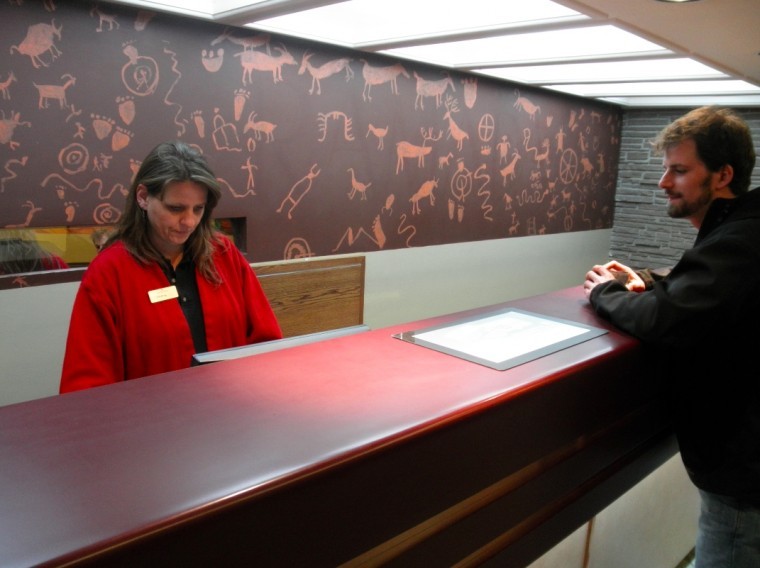Grand County’s Transient Room Tax (TRT) has been raised by 1.25 percent to 4.25 percent at the beginning of the year. This increase brings Grand County into the ranks of the other 15 of the state’s 29 counties that charge the maximum TRT rate.
The 1.25 percent tax hike on all nightly hotel and private campsite rentals, of less than 30 days, is expected to bring the county an additional $760,384 in revenue, according to an estimate by the county clerk’s office.
State law mandates that the money collected through the TRT be used either to promote tourism or to mitigate its impact. Historically, two thirds of the revenue collected by Grand County went towards tourism advertisements. The remaining third was allocated to “brick and mortar” projects designed to help reduce the effects of tourism on the community.
With this year’s increase, the additional 1.25 percent now being charged will almost all go to capital projects, dividing the total 4.25 percent into 2 percent for advertising and 2.25 percent for mitigating the effects of tourism.
The decision to raise the TRT was taken by the county in response to the growing gap between the services provided by the county and the funds needed to pay for them.
“It really comes down to we raise the TRT or property taxes, or we cut services,” said former county councilman Chris Baird. “We have capital and equipment needs, road department needs, maintenance on the courthouse and jail. The only way to pay for these bare necessities is to raise taxes.”
The reallocation of mineral lease money, from services like solid waste to the health district, has left a hole in the budget. Filling this gap by increasing the tax on tourists was decided to be the most fair and politically expedient method.
“There are 2.5 million people that came through Grand County last year, most of them tourists. The services (and infrastructure) we provide for them are very substantial,” Baird said. “This is making tourists pay their own way.”
The goal is to decrease projects that could be funded by the TRT from relying on the county’s general fund. This leaves the general fund to finance projects that are not directly related to or affected by tourism.
Because many of Moab’s hotels have contracts with travel operators months in advance, the county wanted to be sure to give these businesses fair warning of the possible tax increase.
“We wanted businesses to know at least a year in advance so they don’t have to eat that cost,” said Marian DeLay, the executive director of the Moab Area Travel Council, the entity in charge of advertising Grand County. “The county was very good about that.”
Of course, the revenue from the TRT has increased over the years as Moab’s tourist industry has grown. In 2002 TRT collections totaled $1,631,941, in 2007 it reached $2,356,178 and last year it was $2,495,148. The travel council received $1,497,089 of the 2012 TRT revenue for tourism promotion and advertising.
Of the estimated $760,384 that the increase will bring in, 67 percent will go to law enforcement.
Grand County Search and Rescue, whose budget is a subset of the sheriff’s, will be receiving 6.9 percent of the new revenue. However, this money will replace dollars that used to come from the county’s general fund, leaving search and rescues budget the same this year as it was last.
“Of the 108 incidents we responded to last year, only five were local,” said Grand County Search and Rescue commander Jim Webster. “We are dealing with people that are tourists, so using TRT money is easily justified.”
The 10.3 percent of the new tax that solid waste will be receiving, in lieu of its usual mineral lease money, will be used to pay off the bonds it holds for its Klondike site out near the old airport, said solid waste district manager Tom Edwards. Paying the bonds will help to free up more money for operations.
The airport, museum and trail maintenance will get the remainder of the money, with 4 percent going to the travel council to “make sure that we can pay bills in the early part of the year,” DeLay said.
Other than the TRT, Grand County’s two main sources of revenue are property tax, and payments in lieu of taxes (money that is paid by the state and federal government for non-taxable land within the county).
Baird believes that by increasing the TRT the county has helped put its fiscal house in order without adversely affecting tourism.
“There should be no need for a property tax increase in the foreseeable future and the average tourist’s hotel bill will only be a dollar or two more,” he said.




